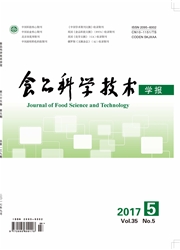

 中文摘要:
中文摘要:
全球范围内转基因大豆的种植和消费越来越普遍,为了保障广大消费者的知情权和自主选择权,促进大豆市场健康有序发展,应尽快完善转基因大豆及其相关产品的科学标识制度,研究不同加工操作对抗草甘膦大豆内外源基因的影响可为标识制度的完善和标识阈值的建立提供强有力的理论参考。文章分别从储藏、机械处理、热处理、酸碱处理、大豆油加工、中国传统豆制品加工等方面综述了不同加工操作对抗草甘膦大豆内外源基因的降解情况,并对内外源基因的稳定性差异进行了初步概述,以期为后续研究更好地服务于科学的标识制度提供有益思路参考。
 英文摘要:
英文摘要:
Genetically modified soybeans are increasingly grown and consumed globally. Labeling regulation aimed at transgenic soybean and its products should be set up as soon as possible to enable the right to know and guarantee the freedom of choice for consumers. Moreover, a healthy and sustainable soybean market would benefit from this work and be expected. In order to successfully provide a powerful data reference for the improvement of labeling legislation and the establishment of threshold value, it becomes necessary to identify whether the presence of glyphosate-tolerant soybean internal and external genes is influenced by various food processes. This review discussed the effect of several food processes such as storage, mechanical stress, heating, acid-base treatment, oil refining and Chinese traditional soy products processes on the DNA degradation and made a preliminary comparison about the stability differences between endogenous and exogenous genes of glyphosatetolerant soybean to give a reference for the more systematic and in-depth study in the future. This review is advised to offer some thoughts reference and theoretical basis for the improvement of labeling legislation.
 同期刊论文项目
同期刊论文项目
 同项目期刊论文
同项目期刊论文
 期刊信息
期刊信息
